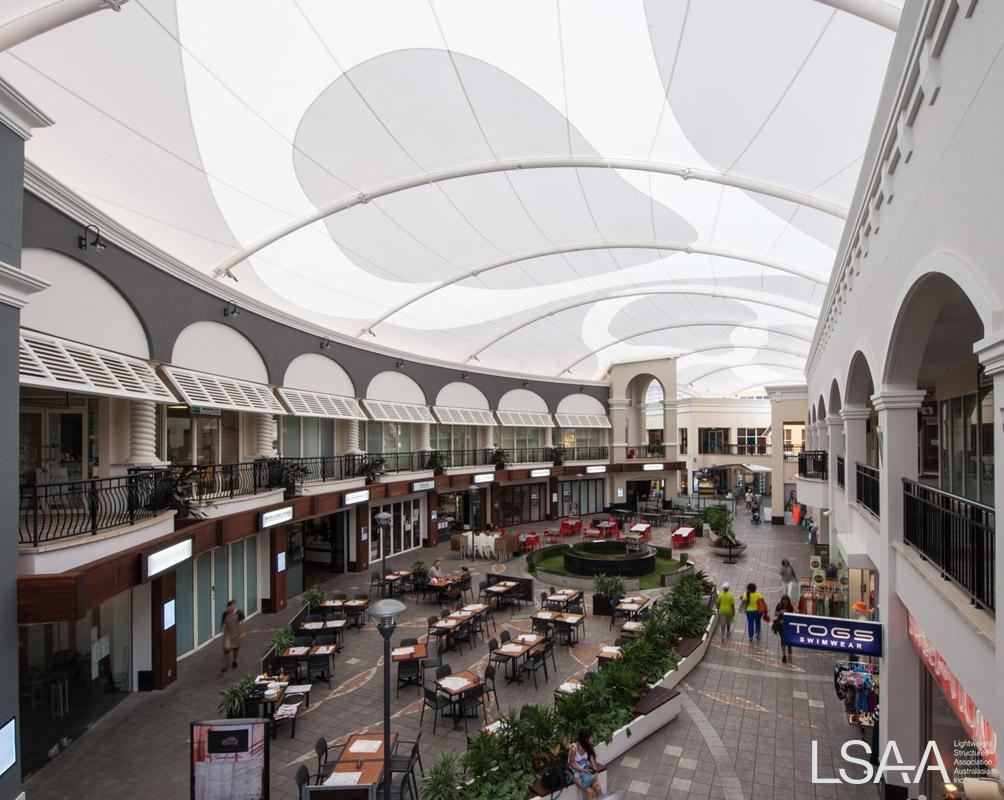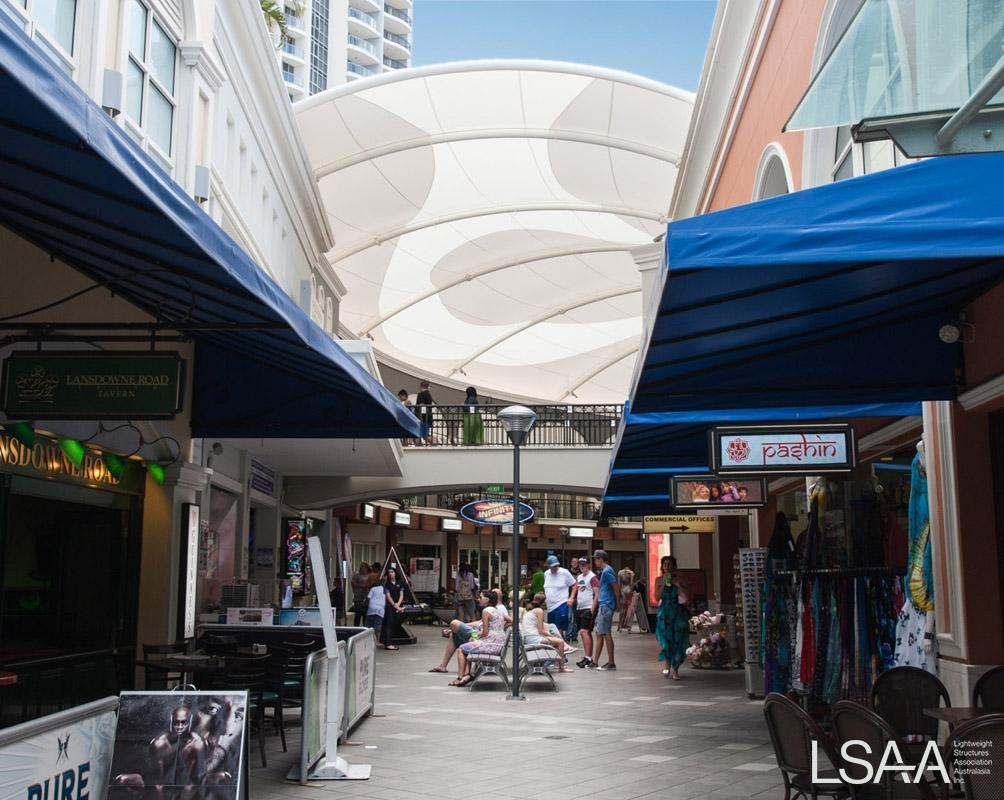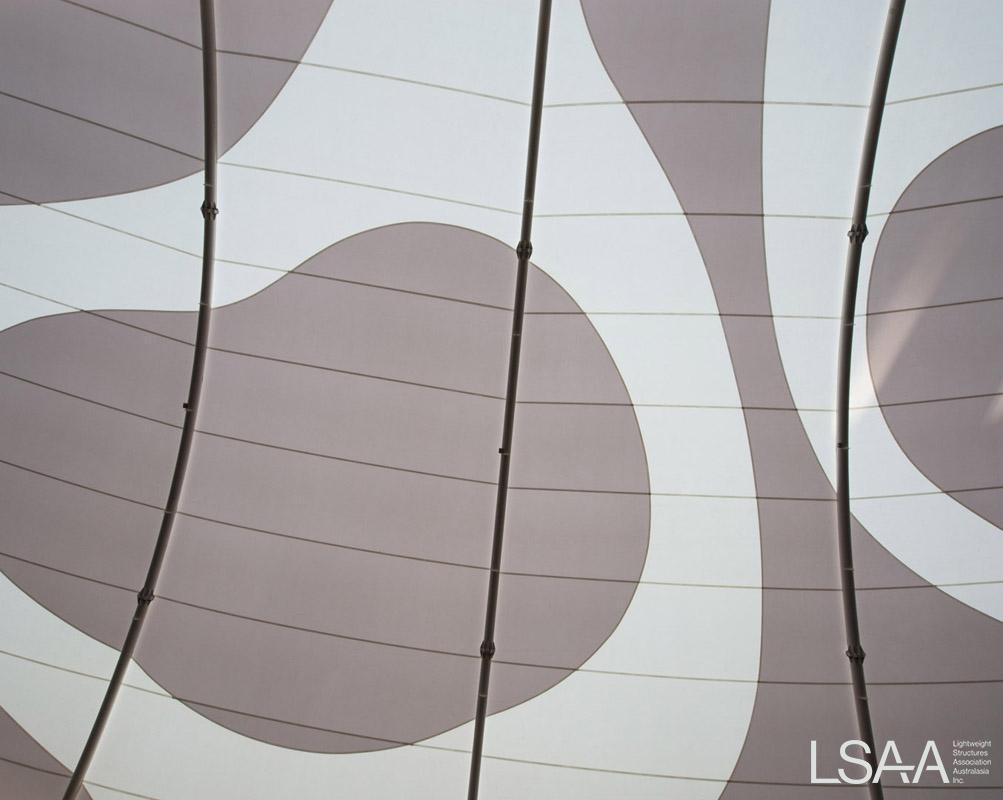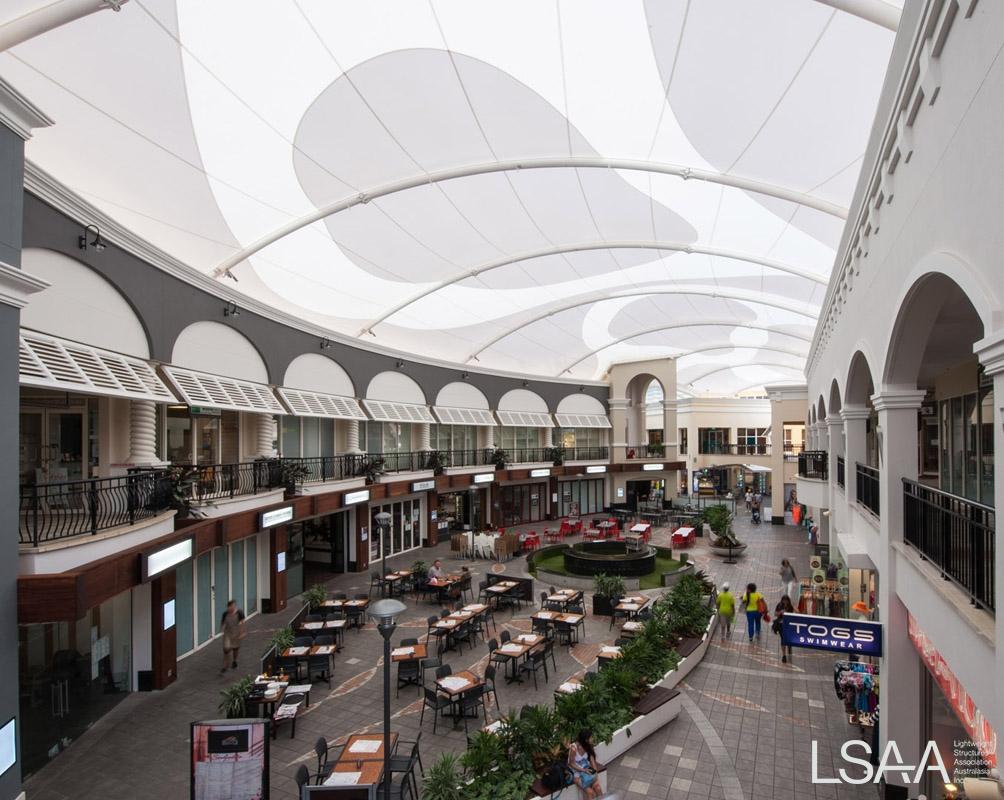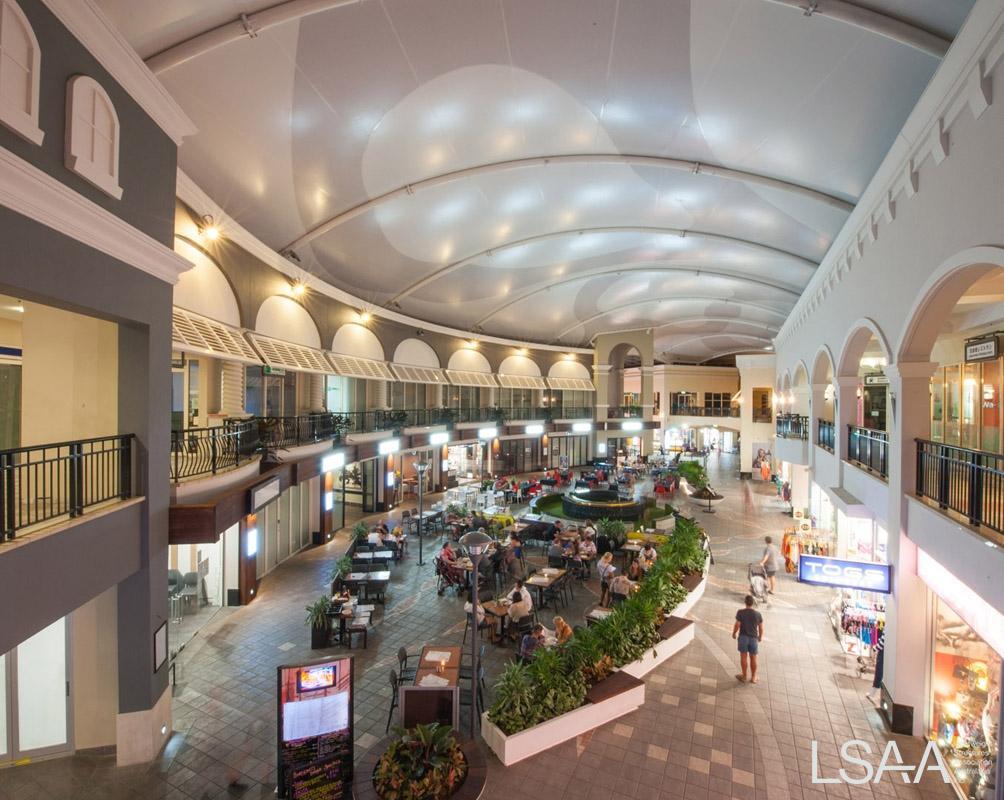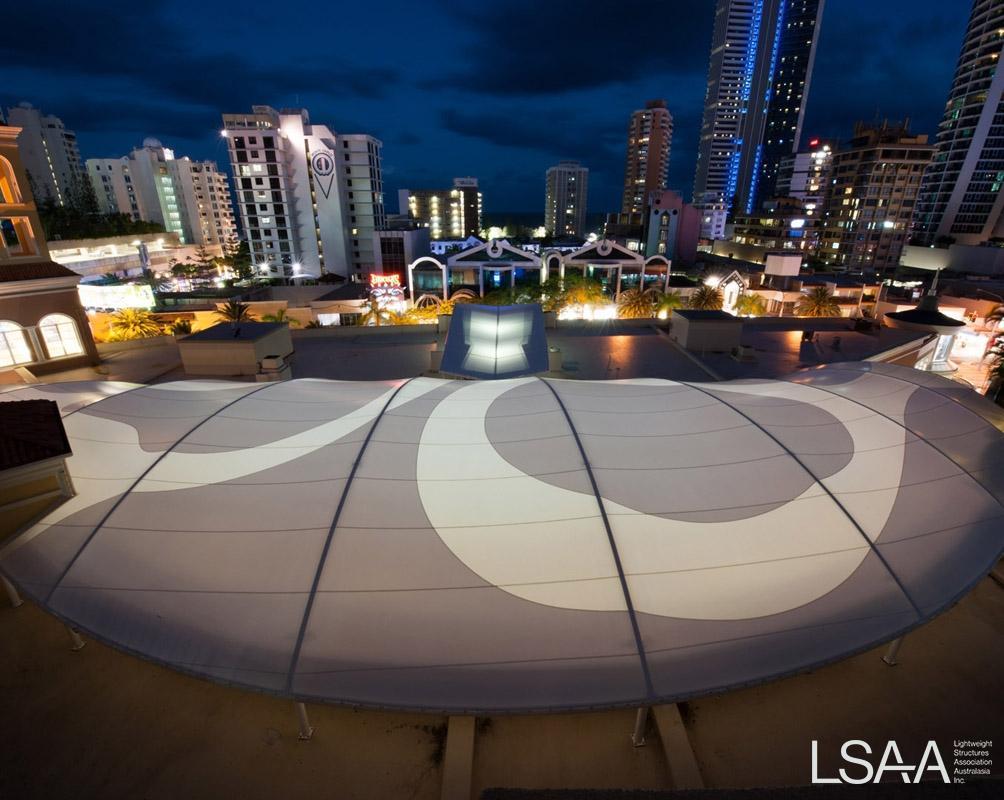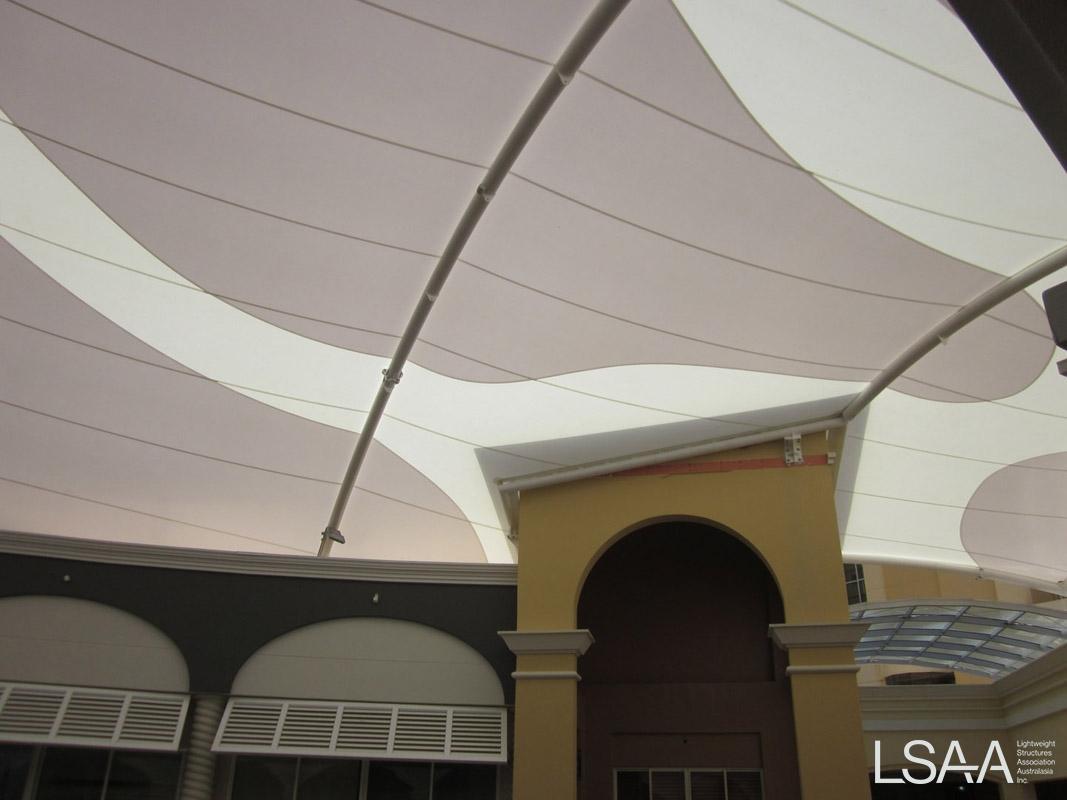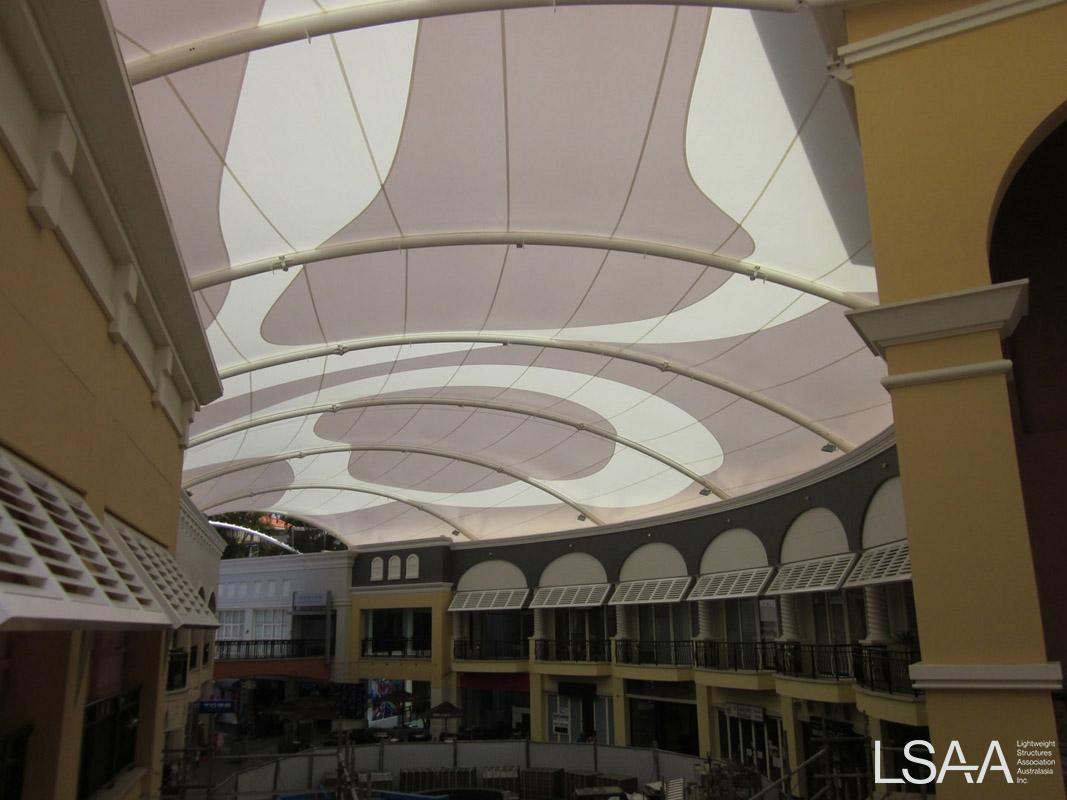Entered into the LSAA 2016 Design Awards (Cat 4 Large Fabric Structures, #4773)
Entrant: MakMax Australia (Engineer, Fabricator, Installer)
Location: Gold Coast, QLD. Team: MakMax Australia
Application: Retail Shopping Centre
Description
Architecturally designed fabric roof canopy – provides visual feature with use of various fabric translucencies, in addition to providing weather protection and lighting enhancement
Design Brief
Client required an architecturally designed fabric roof canopy, which would create a feature – to travel the length of the outdoor café/restaurant precinct.
Utilise the existing shape and style of the retail centre, embrace the lighting (both natural and artificial) and ensure to provide protection from the environment elements of the location.
Structural Systems
The structure covers an atrium of a shopping and restaurant precinct, the entrances of the atrium are narrow, opening into a wide central courtyard with fountain and outdoor dining. The shape of the area is akin to an orange segment, with the largest spans being close to 20m. The aim for the structural system was to for it to appear as minimal and lightweight as possible; arched rafters were chosen to span the atrium, springing from columns and edge beams supported off the roof slabs.
To create an organic and aesthetic form arch height was increased with span. Longitudinal bracing struts were removed by designing the end members to work in full bending and having fabric panels fixed permanently to each arch for out of plane loading. Columns and edge beams are hidden from the atrium below by being behind parapet walls. Major connections were kept to these areas, all visible connections on the arches were designed to be of minimal form and high architectural aesthetic standard.
Materials and Fabrication
Hiroka 212T – 2E and 212T – 2SAC
To create a stand-out structure it was decided to present the client with an option to combine high translucency PVC with standard PVC in a custom patterning of the clients choosing. The final decision was to make around 1/3 of the fabric area high translucency. We decided to pattern this in the typical manner – parallel seams running perpendicular to rafters were used to maximize fabric efficiency and the structure was patterned as if being made from a similar fabric.
The high translucency and standard PVCs had similar stretch characteristics, so multiple compensations did not need to be employed. This simplified the second phase, which was to take the exported patterns in CAD and manually draw over the proposed high translucency areas creating a new subset of fabrication drawings. This was a laborious task, each adjoining panel, with any additional sub-divisions, had to be checked against its neighbors to ensure that the additional patterns added aligned and angles of intersections were coplanar.
This followed into fabrication with each completed panel having multiple check sheets to ensure that when the final roof was completed the patterns would all align.
Collaboration, Construction and Maintenance
Collaboration worked in many areas, patterning being a key one. A circular iterative design and manufacturing exercise was used to run from the base pattern layout for the structure to the final cutting patterns incorporating the client’s desired translucent patterning feature. Another area for close collaboration was in lighting; the client wished for the ability to project LED lighting onto the underside of the canopy roof. Studies, trials and previous project demonstrations were used to determine the appropriate equipment, positioning and control boxes that could meet the desired budget, aesthetic and light coverage.
Ref: sliders/DA2016/Cat4/4773 DP ID 233
